In the question, there is a table having 3 columns and 4 rows. Based on the table, there are 3 questions. Each question has 4 options (a), (b), (c) and (d), ONLY ONE of these four options is correct.

Which combination has 379.28 mL as value for V2?
(II) (i) (K)
(III) (iv) (J)
(II) (ii) (M)
(II) (iii) (K)
The correct Answer is:A
(II) (i) (K)
Topper's Solved these Questions
- BOOK - RESNICK AND HALLIDAYCHAPTER - THE KINETIC THEORY OF GASESEXERCISE - PRACTICE QUESTIONS (Single Correct Choice Type )1videos
THE KINETIC THEORY OF GASES
- BOOK - RESNICK AND HALLIDAYCHAPTER - THE FIRST LAW OF THERMODYNAMICSEXERCISE - PRACTICE QUESTIONS ( INTEGER TYPE )3videos
THE FIRST LAW OF THERMODYNAMICS
- BOOK - RESNICK AND HALLIDAYCHAPTER - THE NUCLEUSEXERCISE - PRACTICE QUESTIONS(Integer Type)7videos
THE NUCLEUS
Similar Questions
In the question, there is a table having 3 columns and 4 rosw. Based on the table, there are 3 questions. Each question has 4 options (a), (b) , (c ) an (d), ONLY ONE of these four options is correct.
Heat is added to a 1.0 kg solid sample of a material at −200∘C .The figure shows the temperature of the material as a function of the heat added.
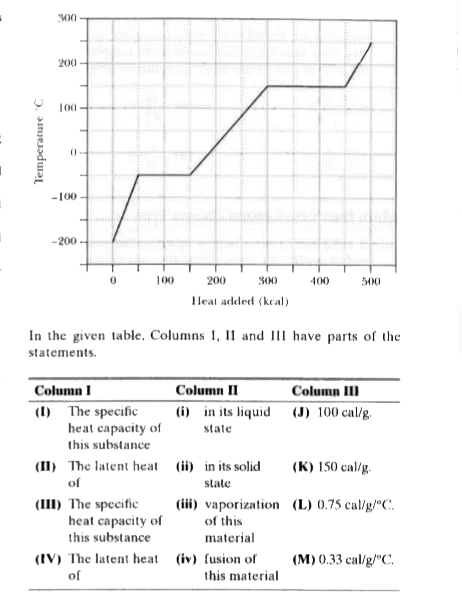
Which one of the following combination is correct about change of state of substance from liquid to gas ?View SolutionIn the question, there is a table having 3 columns and 4 rosw. Based on the table, there are 3 questions. Each question has 4 options (a), (b) , (c ) an (d), ONLY ONE of these four options is correct.
Heat is added to a 1.0 kg solid sample of a material at −200∘C .The figure shows the temperature of the material as a function of the heat added.

Which one of the following combination is correct about change of state of substance from solid to liquid ?View Solution
Knowledge Check
- Question 1 - Select One
In each question, there is a table having 3 columns and 4 rows. Based on the table, there are 3 questions. Each question has 4 options (a), (b), ( c) and (d), ONLY ONE of these four options is correct.
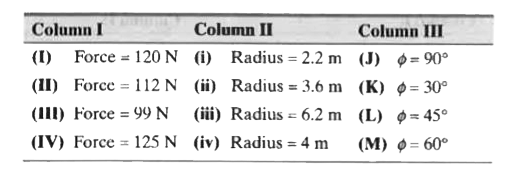
Which object has 178.2√3N⋅m as the resulting torque (as a vector)?A(III) (ii) (L)B(III) (ii) (K)C(II) (iii) (K)D(I) (i) (M) - Question 2 - Select One
In each question, there is a table having 3 columns and 4 rows. Based on the table, there are 3 questions. Each question has 4 options (a), (b), ( c) and (d), ONLY ONE of these four options is correct.
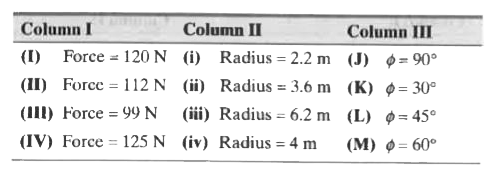
Which object has 137.5N⋅m as the resulting torque (as a vector)?A(I) (iii) (L)B(IV) (i) (M)C(II) (iv) (K)D(IV) (i) (K) - Question 3 - Select One
In each question, there is a table having 3 columns and 4 rows. Based on the table, there are 3 questions. Each question has 4 options (a), (b), ( c) and (d), ONLY ONE of these four options is correct.

Which object has 480N⋅m as the resulting torque (as a vector)?A(I) (iv) (J)B(I) (i) (K)C(III) (iii) (L)D(I) (ii) (L)
In the question, there is a table having 3 columns and 4 rosw. Based on the table, there are 3 questions. Each question has 4 options (a), (b) , (c ) an (d), ONLY ONE of these four options is correct.
Heat is added to a 1.0 kg solid sample of a material at −200∘C .The figure shows the temperature of the material as a function of the heat added.

Which one of the following combination about the heat capacity of the substance is correct ?View SolutionIn each question, there is a table having 3 columns and 4 rows. Based on the table, there are 3 questions. Each question has 4 options (a), (b), ( c ) and (d), ONLY ONE of these four options in correct.
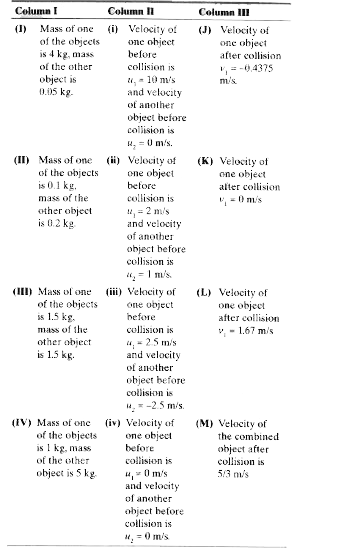
In which condition is the velocity of one of the objects after collision 1.165 m/s ?View SolutionIn each question, there is a table having 3 columns and 4 rows. Based on the table, there are 3 questions. Each question has 4 options (a), (b), ( c ) and (d), ONLY ONE of these four options in correct.
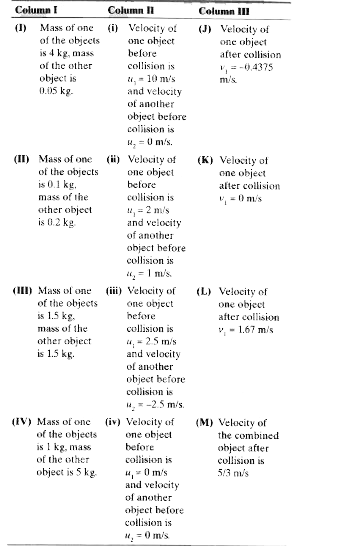
In which condition is the velocity of one of the objects after collision 35 m/s ?View SolutionIn each question, there is a table having 3 columns and 4 rows. Based on the table, there are 3 questions. Each question has 4 options (a), (b), ( c ) and (d), ONLY ONE of these four options in correct.
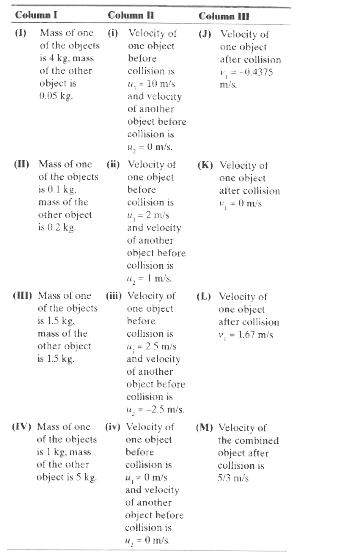
In which condition is the total momentum after collision 10 kg m/s ?View SolutionThe following table has 3 columns and 4 rows. Based on table there are THREE questions. Each question has FOUR options (A) , (B) , ( C) and (D) . ONLY ONE of these four options is correct
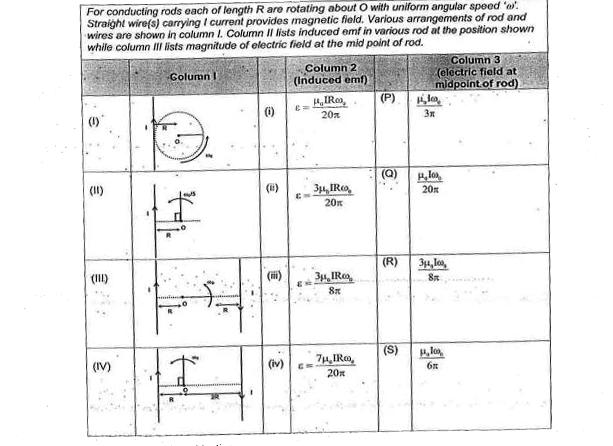 View Solution
View Solution

